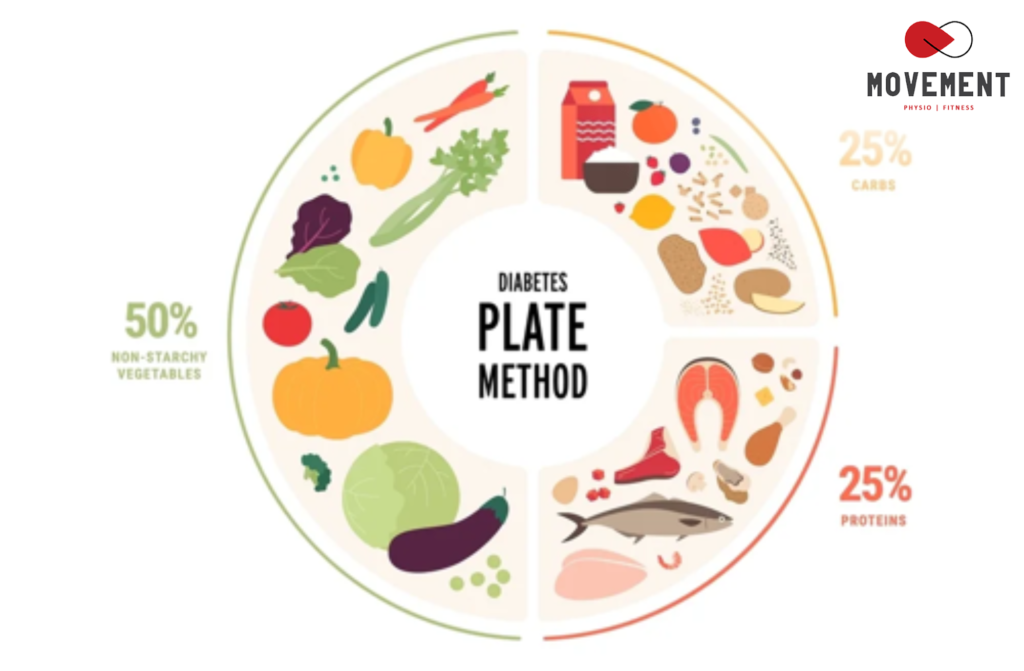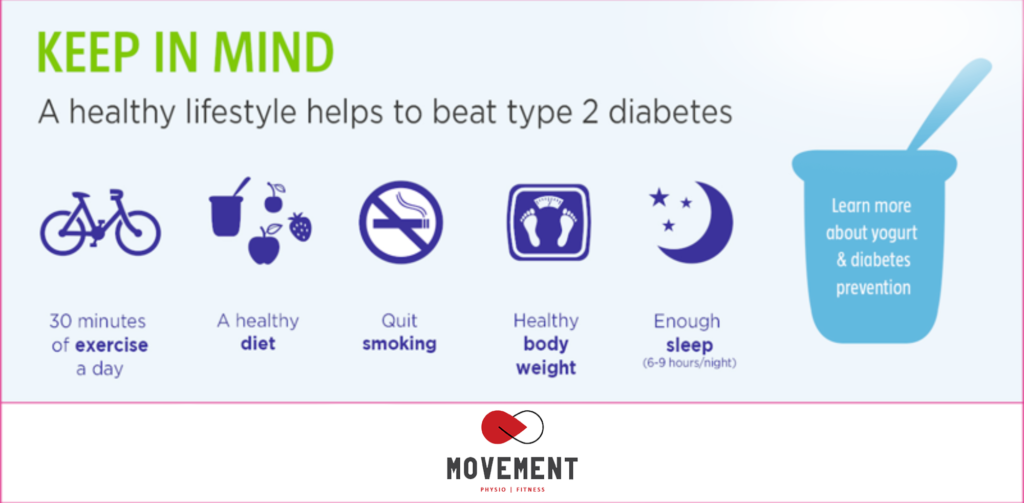Diabetes might sound daunting, especially in Cambodia, where it’s increasingly common. People in Cambodia are unknowingly getting type 2 diabetes because they are not well educated on the subject and need more information. Yet, there’s a silver lining—your diet can be a delightful playground for managing diabetes, not just a set of restrictions. Let’s explore how you can turn every meal into a celebration of health.
This blog is based on scientific research, so our readers can rest assured that experts and researchers vet the information we provide.
Crafting your plate with joy and color
Imagine your plate as a vibrant palette. Here’s how to paint it with the proper nutrients:
- Vegetables: Your colorful allies
Picture half your plate filled with a rainbow of vegetables: bright bell peppers, crisp spinach, and juicy tomatoes. These aren’t just splashes of color but powerful tools to balance your blood sugar.
- Lean proteins: Your body’s building blocks
Now, dedicate a quarter of your plate to lean proteins. Think of a grilled chicken breast or a succulent piece of salmon. These proteins are like your body’s building blocks, essential for repair and growth without spiking sugar.
- Smart carbs: Your energy source
The remaining quarter is for carbs, but choose wisely. A scoop of quinoa or a portion of sweet potatoes provides the energy you need while keeping sugar levels steady.
- Sample meal:
A vibrant salad with assorted veggies, grilled chicken strips, and a side of quinoa. It’s not just a meal; it’s a feast for your cells!

Snacking with purpose
Snacks aren’t just fillers; they’re opportunities to nourish. Swap out chips for a handful of almonds, or exchange that pastry for a slice of whole-grain toast topped with avocado.
Decoding fats and sugars
- Fats: Think of them as traffic lights. Avocados and nuts are green lights, full of fats that cheer for your heart. Buttery pastries? A definite red light.
- Sugars: Treat them like special guests at a party, and enjoy them in moderation—reserve sweets for occasional celebrations rather than daily visitors.
Fiber and protein: Your nutritional best friends
- Fiber: Imagine fiber as your body’s broom, sweeping away toxins and keeping sugar levels in check. Beans, oats, and berries are great pals in this mission.
- Protein: It’s like a steady friend, keeping you full and energized. A lentil soup or a tofu stir-fry can be your protein champions.
Hydration with a twist
Water doesn’t have to be boring. Add a splash of excitement with cucumber slices or a squeeze of lime for a refreshing twist that keeps you hydrated without sugar spikes.
Creating your food symphony
Every individual’s rhythm is different, and so is their diet. Collaborate with a dietitian to compose a meal plan that sings harmoniously with your lifestyle and preferences, turning each meal into a symphony of flavors and nutrients.
At Movement, we have a certified nutritionist who is an expert in crafting meal plans for you to combat not only diabetes but also weight loss or fitness gain.
Foods and drinks to limit: Making smart choices
- Limit fried and high-fat foods: Instead of fried chicken, choose grilled chicken breast. Swap out high-fat cuts of meat for leaner choices like turkey or fish.
- Reduce salt intake: High sodium can affect blood pressure. Instead of regular canned soups or ready meals, try homemade soups with fresh ingredients and herbs for flavor.
- Cut back on sweets: Replace a daily candy bar with a piece of fruit or a small square of dark chocolate to satisfy your sweet tooth without a sugar spike.
- Avoid sugary beverages: Trade a can of soda for sparkling water infused with natural fruit slices or a splash of 100% fruit juice.
Alcohol consumption
Moderate drinking is critical. For men, up to two drinks per day, and for women, one. A drink could be 12 ounces of beer, 5 ounces of wine, or 1.5 ounces of distilled spirits. Always check blood sugar levels more frequently when consuming alcohol, especially if you’re on insulin or medications that increase insulin production.
Meal planning and timing
Eating at consistent times helps stabilize blood sugar. If you’re on “mealtime” insulin, flexibility is greater, but don’t skip meals. If your medication is fixed, align your carb intake to prevent lows or highs in blood sugar.
Weight-loss strategies: tailored and effective
Engage with our trainer and nutritionist, Mark Chen, to develop a plan that considers your calorie needs and preferences. For instance, replacing a side of fries with a salad can reduce calorie intake while boosting nutrient intake.
Mark could also develop an effective workout plan for you to ensure you are not overexercising and help maintain a balanced glucose level.
The benefits of physical activity
Regular activity can lower blood glucose and improve insulin sensitivity. Aim for a mix of aerobic, strength, and flexibility exercises. For example, combine brisk walking (aerobic), weight lifting (strength), and yoga (flexibility).

Safe exercise practices: Tips and tricks
Stay hydrated: Drink water before, during, and after exercise.
Plan your meals and snacks around your activity to maintain stable blood sugar levels. For example, have a small, carb-containing snack like an apple or a few crackers if you plan to exercise for more than an hour.
Choosing suitable physical activities
- Aerobic activities: Aim for 30 minutes of walking, swimming, or cycling most days. Start with 10-minute sessions and gradually increase.
- Strength Training: Build muscle with activities like resistance band exercises or body-weight exercises like squats and push-ups twice a week.
- Flexibility and balance: Incorporate yoga or pilates to improve flexibility and balance, reducing the risk of falls, which is especially important as you age.
Integrating activities into daily life
- Opt for stairs over elevators.
- Walk during phone calls.
- Engage in active hobbies like gardening or dancing.
Monitoring and adjusting: Always monitor your blood sugar levels in response to changes in diet or activity levels. Use this data to adjust your food intake, activity, or medication in consultation with your healthcare team.
Embrace your journey to wellness with confidence
Navigating your diet and activity with diabetes might seem like a complex puzzle, but each piece you put in place brings you closer to a vibrant, healthier life. Remember, you’re not just following guidelines but embarking on a personalized journey that celebrates your unique needs and preferences.
Embrace the changes you make, no matter how small, as each step contributes to a bigger picture of wellness. Whether swapping out soda for sparkling water, enjoying a brisk walk in the morning, or savoring the crunch of fresh vegetables, these choices empower you to take control of your diabetes and live life to its fullest.
You’re not alone on this journey. Arm yourself with knowledge, healthcare professionals’ support, and your community’s love. Let your daily choices testify to your strength and commitment to your well-being.
As you continue to make informed decisions about your diet and activity, imagine the possibilities. Picture yourself with more energy, a more muscular body, and a clearer mind, all fueled by the nurturing choices you make each day.
So, take heart, embrace the adventure, and confidently step forward each day, knowing that each positive choice propels you toward a brighter, healthier future. Your diabetes management journey is not just about the foods you eat or the steps you count; it’s about crafting a life filled with joy, health, and fulfillment.
Here’s to your health, your choices, and your journey. Embrace it all with optimism and determination, and watch as your life transforms, one empowered decision at a time.

P.S
In the ongoing battle against diabetes, the emergence of Continuous Glucose Monitoring (CGM) systems marks a revolutionary leap, setting a new gold standard for managing this pervasive condition. Unlike traditional glucose testing methods, which offer only snapshots of blood sugar levels, CGMs provide a dynamic, real-time portrait of glucose fluctuations throughout the day. This constant vigilance empowers individuals with diabetes to make more informed decisions regarding their diet, exercise, and medication, leading to improved blood sugar control and a significant reduction in the risk of diabetes-related complications.
CGMs work by using a tiny sensor placed under the skin to measure glucose levels in the interstitial fluid. This data is then transmitted to a device that displays current glucose levels, trends, and patterns. Such comprehensive insight is particularly beneficial in preventing extreme glucose events, such as hyperglycemia and hypoglycemia, by alerting users to changes in their glucose levels that require immediate attention.
The advent of CGM technology heralds a new era in diabetes care, offering a beacon of hope for better disease management. It shifts the focus from reactive to proactive management, enabling individuals to stay one step ahead of their condition. As accessibility to CGM systems improves, they are poised to become an indispensable tool in the diabetes care arsenal, transforming the lives of millions worldwide. This innovative approach not only enhances the quality of life for those living with diabetes but also significantly lightens the load of diabetes management, truly making it the new gold standard in the fight against this chronic disease.
At Movement, we are at the frontline of the fight against Diabetes and can help you leverage this new technology. Contact us to schedule your first consultation.
References
[1] American Diabetes Association. Foundations of care and comprehensive medical evaluation. Diabetes Care. 2016;39(suppl 1):S26 (Table 3.3).
[2] Dietary supplements: what you need to know. National Institutes of Health, Office of Dietary Supplements. Updated June 17, 2011. Accessed June 21, 2016. https://ods.od.nih.gov/HealthInformation/DS_WhatYouNeedToKnow.aspx NIH external link.
[3] U.S. Department of Health and Human Services, Office of Disease Prevention and Health Promotion. Physical Activity Guidelines for Americans, 2nd edition. Washington, DC: U.S. Department of Health and Human Services; 2018. https://health.gov/paguidelines/second-edition/ External link. Updated January 14, 2019. Accessed January 14, 2019.
[4] Yardley JE, Sigal RJ. Exercise strategies for hypoglycemia prevention in individuals with type 1 diabetes. Diabetes Spectrum. 2015;28(1):32–38.
[5] Colberg SR, Sigal RJ, Yardley JE, et al. Physical activity/exercise and diabetes: a position statement of the American Diabetes Association. Diabetes Care. 2016;39(11):2065–2079.
